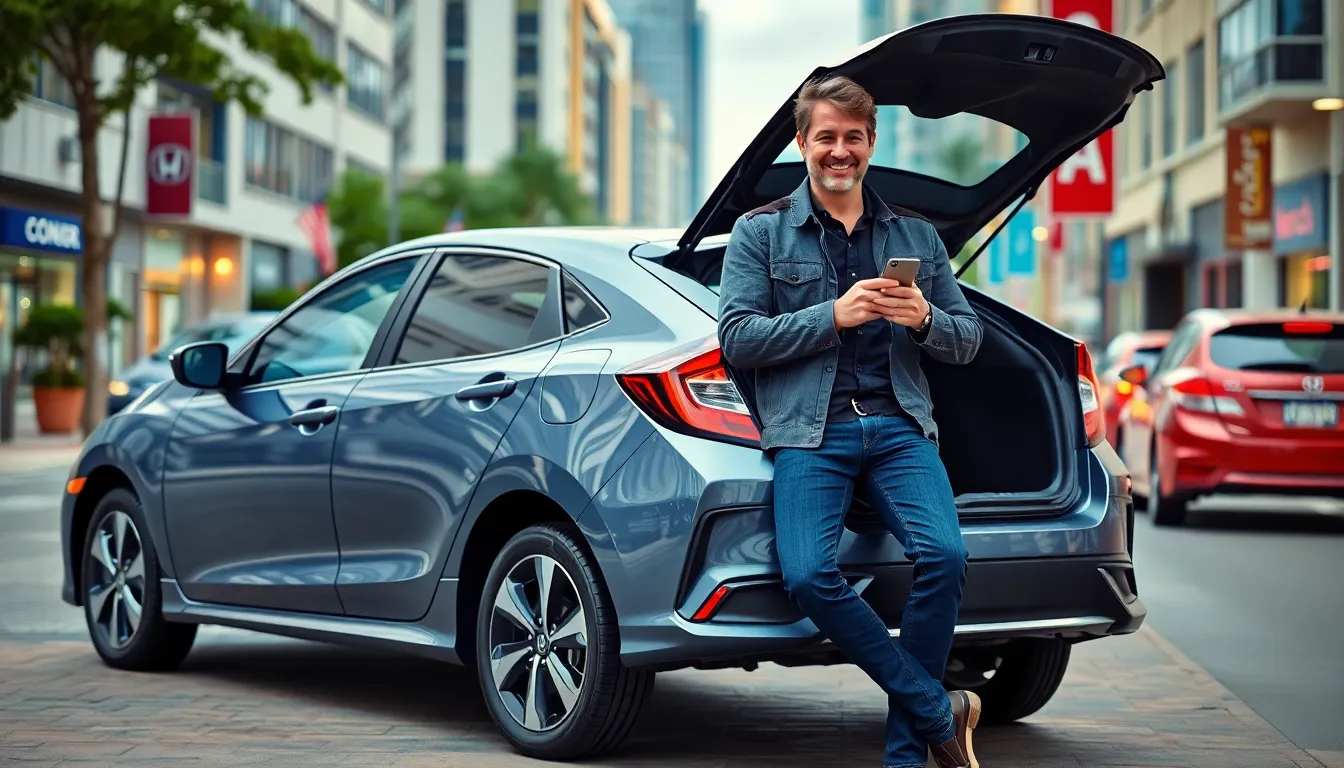We’ve all been there – standing in a car dealership lot wondering which vehicle type makes the most sense for our lifestyle and budget. Hatchback cars have quietly become one of the most practical and versatile choices on today’s market, offering an impressive blend of fuel efficiency, cargo space, and affordability that’s hard to beat.
What makes hatchbacks so appealing? They’re the perfect middle ground between compact sedans and larger SUVs. We’re talking about vehicles that can handle your daily commute with ease while still providing enough room for weekend adventures or grocery runs. From the sporty Honda Civic Hatchback to the reliable Toyota Corolla Hatchback, these cars deliver exceptional value without sacrificing style.
Whether you’re a first-time buyer or looking to downsize from a larger vehicle, understanding what hatchbacks bring to the table can help you make a smarter automotive decision that’ll serve you well for years to come.
What Are Hatchback Cars and Why They’re Popular
Hatchback cars combine the best of both worlds by offering sedan-like efficiency with SUV-style versatility. These vehicles have captured the hearts of millions of drivers worldwide who value practicality without sacrificing style.
Definition and Key Characteristics
Hatchback cars feature a distinctive rear door that opens upward to reveal the cargo area, creating one continuous space between the passenger cabin and trunk. The design eliminates the traditional separation found in sedans, where a fixed rear window divides the interior from the storage compartment.
Key characteristics that define modern hatchbacks include:
- Integrated cargo space that expands when you fold down the rear seats
- Shorter overall length compared to sedans in the same class
- Higher roofline at the rear for improved headroom and storage capacity
- Versatile seating configurations that adapt to your changing needs
- Compact footprint that makes parking and maneuvering easier in tight spaces
Most hatchback models offer between 15 to 25 cubic feet of cargo space with seats up, expanding to 40-50 cubic feet when you fold the rear seats down. This flexibility makes them perfect for everything from grocery runs to moving furniture.
History and Evolution of Hatchback Design
Hatchback design traces its roots back to the 1930s when European manufacturers began experimenting with rear-opening doors for better cargo access. The concept gained serious momentum during the 1960s when Renault introduced the R16, which many consider the first modern hatchback.
Major milestones in hatchback evolution:
| Decade | Key Development | Notable Models |
|---|---|---|
| 1970s | Mass adoption in Europe | Volkswagen Golf, Ford Fiesta |
| 1980s | Introduction to American markets | Honda Civic, Toyota Tercel |
| 1990s | Performance variants emerge | Volkswagen GTI, Honda Civic Si |
| 2000s | Premium hatchbacks gain popularity | Audi A3, BMW 1 Series |
| 2010s | Hybrid and electric variants | Toyota Prius, Nissan Leaf |
European manufacturers led the hatchback revolution because their cities demanded compact, efficient vehicles that could navigate narrow streets while providing practical storage. American consumers initially resisted the design, preferring traditional sedans and wagons, but fuel crises in the 1970s changed attitudes dramatically.
Today’s hatchback cars incorporate advanced safety features, premium materials, and sophisticated technology that rivals luxury sedans. Manufacturers like Honda, Toyota, and Hyundai have refined their hatchback offerings to appeal to buyers who want efficiency without compromising on comfort or style.
Top Benefits of Choosing Hatchback Cars
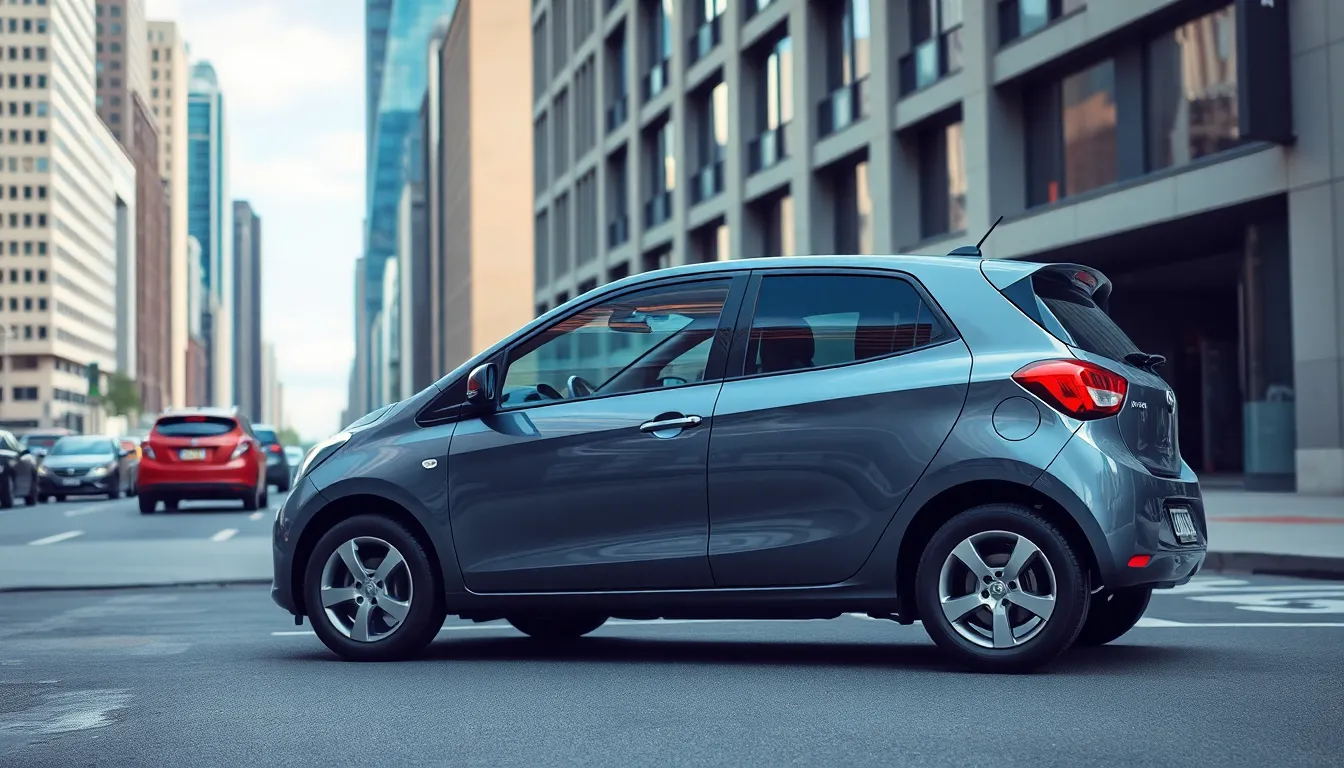
We’ve identified three standout advantages that make hatchbacks an excellent choice for today’s drivers.
Superior Fuel Economy and Efficiency
Fuel efficiency stands as the primary advantage of hatchback ownership. Most hatchback models achieve between 28-35 mpg in combined city and highway driving according to EPA ratings. We see models like the Honda Civic Hatchback delivering up to 32 mpg combined while the Nissan Versa Note reaches an impressive 35 mpg.
Lightweight construction contributes significantly to these impressive fuel numbers. Hatchbacks typically weigh 200-400 pounds less than comparable SUVs due to their compact design and reduced materials. This weight difference translates directly into better gas mileage and lower emissions.
Advanced engine technology further enhances hatchback efficiency. Many manufacturers equip their hatchback models with turbocharged engines like Honda’s 1.5L turbo or Hyundai’s 1.6L GDI that provide power when needed while maintaining excellent fuel economy during normal driving.
Enhanced Cargo Space and Versatility
Cargo capacity surprises many potential hatchback buyers with its generous dimensions. The Toyota Corolla Hatchback offers 17.8 cubic feet of cargo space with rear seats up and expands to 23.0 cubic feet with seats folded. We find that this space easily accommodates weekly grocery trips or weekend gear.
| Model | Cargo Space (Seats Up) | Cargo Space (Seats Down) |
|---|---|---|
| Honda Civic Hatchback | 25.7 cu ft | 46.2 cu ft |
| Toyota Corolla Hatchback | 17.8 cu ft | 23.0 cu ft |
| Volkswagen Golf | 22.8 cu ft | 52.7 cu ft |
| Subaru Impreza Hatchback | 20.8 cu ft | 55.3 cu ft |
Flexible seating configurations make hatchbacks incredibly practical for various needs. Split folding rear seats allow us to carry long items while still accommodating passengers. We can transport furniture pieces like small tables or bicycles that wouldn’t fit in traditional sedans.
Easy loading access through the rear hatch eliminates the hassle of trunk loading. The wide opening and lower lift-over height reduce strain when loading heavy items. We appreciate this feature especially when carrying groceries or sports equipment.
Easy Maneuverability in Urban Settings
Compact dimensions make hatchbacks ideal for city driving and parking. Most hatchbacks measure between 160-175 inches in length compared to 185-195 inches for mid-size sedans. This size difference means easier parallel parking and navigation through tight city streets.
Shorter wheelbases improve turning radius for better urban maneuverability. The Honda Civic Hatchback has a turning radius of just 35.9 feet while the Volkswagen Golf manages 35.6 feet. We find these tight turning circles particularly helpful in crowded parking lots and narrow residential streets.
Higher seating positions provide better visibility in traffic situations. Hatchback drivers sit approximately 2-3 inches higher than sedan occupants which improves sight lines over other vehicles. This elevated position helps us spot pedestrians and cyclists more easily in urban environments.
Responsive steering and nimble handling characteristics enhance city driving confidence. Most hatchbacks feature sport-tuned suspensions that provide quick steering response without compromising ride comfort. We experience better control during lane changes and quick maneuvering situations common in city traffic.
Best Compact Hatchback Cars for City Driving
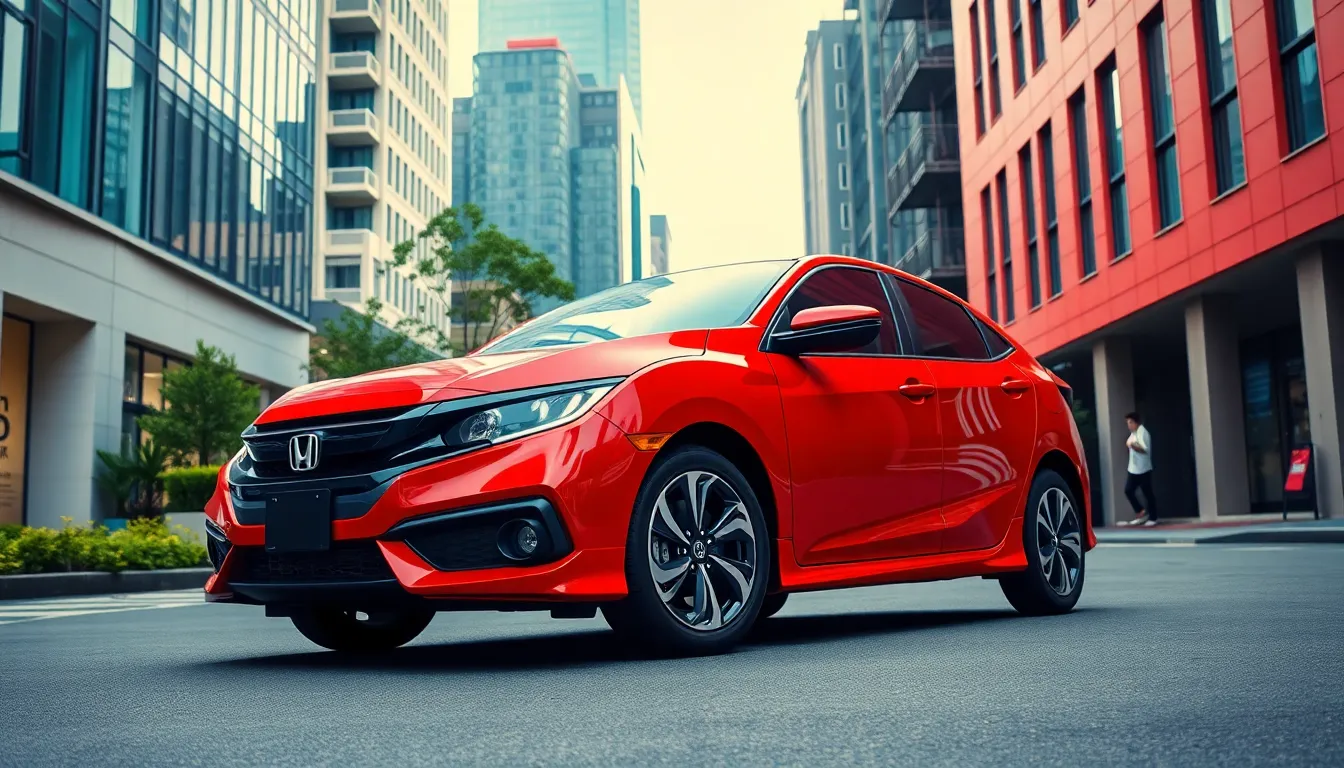
Urban driving demands vehicles that excel in tight spaces while delivering practical everyday functionality. We’ve identified three standout compact hatchbacks that consistently deliver exceptional city driving experiences.
Honda Civic Hatchback
We find the Honda Civic Hatchback offers an unbeatable combination of fuel efficiency and urban maneuverability. The 2024 model achieves an impressive 32 mpg in city driving conditions while providing 25.7 cubic feet of cargo space with rear seats folded down.
Driving through crowded city streets becomes effortless thanks to the Civic’s responsive 2.0-liter engine and precise steering feedback. The vehicle’s 174.9-inch overall length makes parallel parking significantly easier compared to traditional sedans.
Performance enthusiasts will appreciate the available 1.5-liter turbocharged engine that delivers 180 horsepower while maintaining excellent fuel economy. Technology features include a standard 7-inch touchscreen, Apple CarPlay integration, and Honda Sensing safety suite that provides confidence in stop-and-go traffic.
Toyota Corolla Hatchback
We recommend the Toyota Corolla Hatchback for drivers seeking maximum reliability and value in urban environments. This model consistently delivers 32 mpg in city conditions while offering 23.0 cubic feet of expandable cargo capacity.
Maneuvering through narrow city streets feels natural with the Corolla’s compact 171.5-inch length and tight 36.1-foot turning radius. The elevated seating position provides excellent visibility for handling busy intersections and identifying parking spaces quickly.
Standard features include Toyota Safety Sense 2.0, an 8-inch touchscreen display, and wireless smartphone connectivity that keeps you connected during city commutes. The CVT transmission ensures smooth acceleration in heavy traffic while maximizing fuel efficiency.
Volkswagen Golf
We consider the Volkswagen Golf a premium choice for city drivers who prioritize European engineering and refined handling. The Golf achieves 30 mpg in city driving while providing 22.8 cubic feet of cargo space for urban shopping and weekend activities.
Handling tight city corners feels confident with the Golf’s sophisticated suspension tuning and responsive steering system. The vehicle’s 168.0-inch length makes it one of the most compact options in this segment while maintaining surprising interior spaciousness.
Premium touches include available leather seating, dual-zone climate control, and an advanced infotainment system with gesture controls. The Golf’s build quality and attention to detail set it apart from competitors, making every city drive feel refined and comfortable.
Most Reliable Hatchback Cars Under $25,000
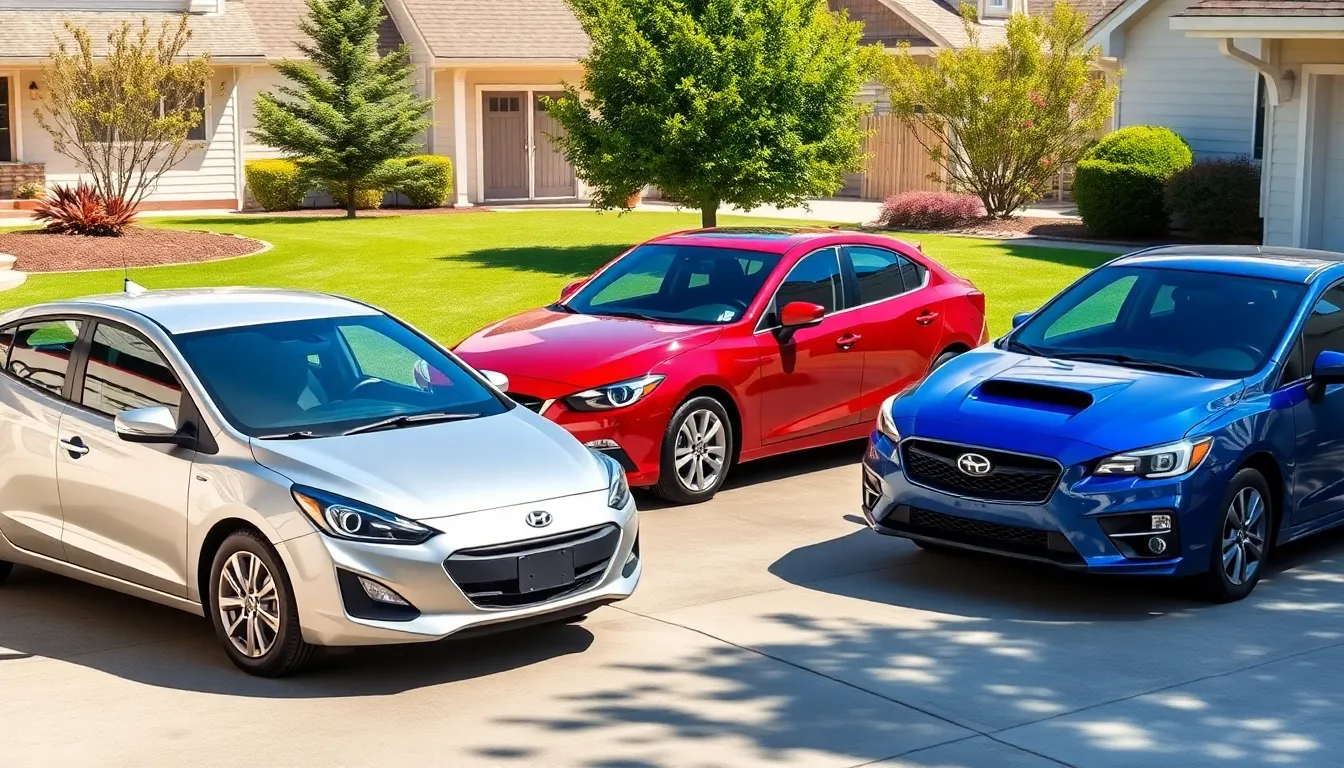
Finding a dependable hatchback that delivers exceptional value without very costly requires careful consideration of long-term reliability and overall ownership costs. We’ve identified three standout models that consistently earn top marks for dependability while staying within budget-conscious buyers’ price range.
Hyundai Elantra GT
Hyundai’s Elantra GT stands out as one of the most reliable hatchback options in the affordable segment, offering impressive build quality and a comprehensive 10-year/100,000-mile powertrain warranty. This model achieves excellent fuel economy ratings of 28 city/37 highway mpg with its standard 2.0-liter engine, making it cost-effective for daily commuting. We appreciate its spacious interior that comfortably seats five passengers and provides 24.9 cubic feet of cargo space with rear seats folded down.
The Elantra GT’s reliability stems from proven engineering and quality control improvements Hyundai has implemented over recent years. Safety features come standard, including forward collision avoidance and driver attention warning systems that enhance peace of mind. Starting prices typically range from $20,000 to $23,000 for well-equipped models, positioning it as an exceptional value proposition in the reliable hatchback market.
Mazda3 Hatchback
Mazda’s commitment to craftsmanship shines through in the Mazda3 Hatchback, which consistently ranks among the most dependable compact cars according to J.D. Power reliability studies. This model combines captivating driving dynamics with practical everyday usability, featuring a refined 2.5-liter engine that delivers 28 city/36 highway mpg fuel efficiency. We find its interior particularly impressive, with premium materials and intuitive controls that rival more expensive luxury vehicles.
Reliability ratings for the Mazda3 Hatchback consistently exceed industry averages, with particularly strong marks for engine and transmission durability. The vehicle provides 20.2 cubic feet of cargo capacity and offers advanced safety technologies like blind spot monitoring and rear cross traffic alert as standard equipment. Pricing typically starts around $21,500 for base models, with fully loaded versions remaining under $25,000.
Subaru Impreza Hatchback
Subaru’s Impreza Hatchback delivers exceptional reliability through its proven boxer engine design and standard all-wheel drive system, making it unique in the affordable hatchback segment. This model achieves 28 city/36 highway mpg even though its all-weather capability, providing year-round confidence for drivers in various climate conditions. We value its practical design that offers 20.8 cubic feet of cargo space and excellent ground clearance for light off-road adventures.
The Impreza’s reliability record includes top safety ratings from both IIHS and NHTSA, with standard EyeSight driver assistance technology that helps prevent accidents. Subaru’s reputation for long-term dependability means lower maintenance costs over the vehicle’s lifespan. Starting prices begin around $19,000 for base models, with well-equipped variants staying comfortably under $24,000, making it one of the most affordable all-wheel drive hatchbacks available.
Luxury Hatchback Cars Worth the Investment
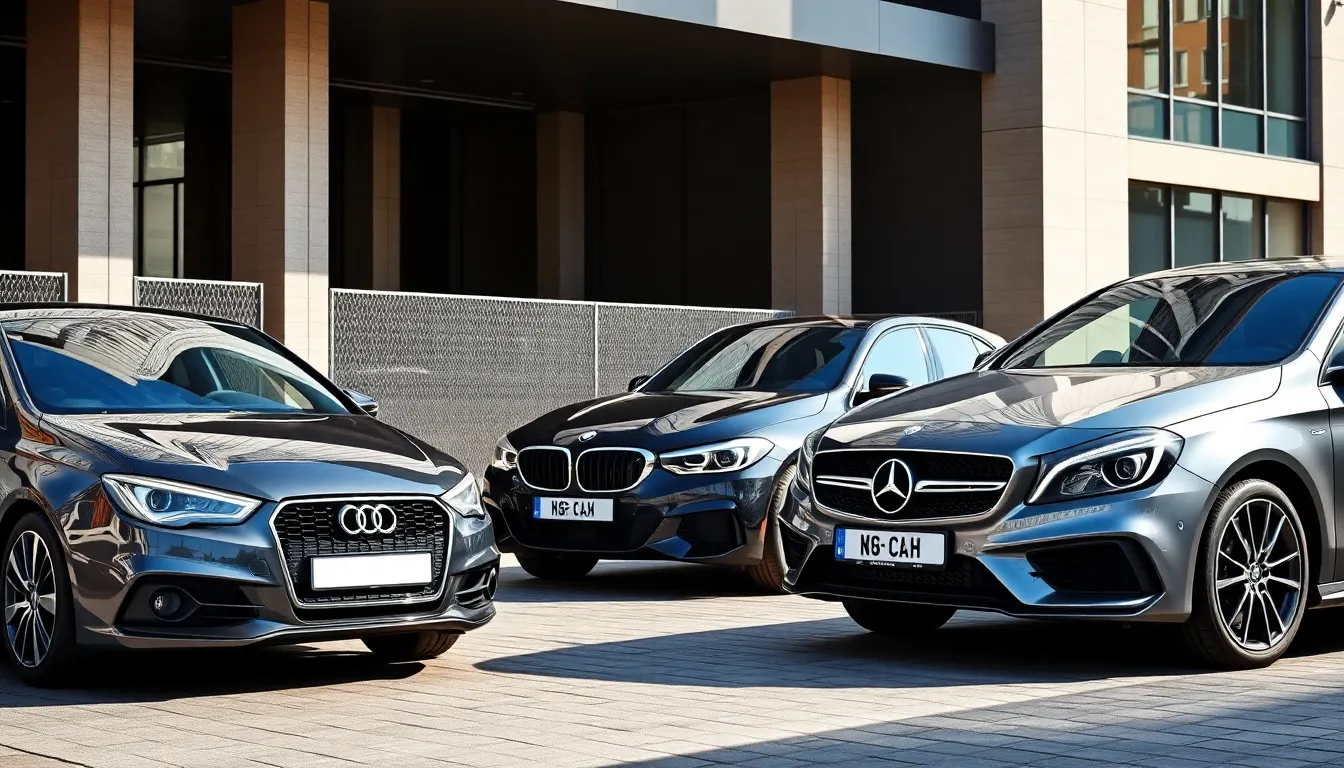
Premium hatchback models deliver sophisticated engineering and upscale amenities that justify their higher price points. We’ve identified three luxury hatchbacks that offer exceptional value for discerning buyers seeking refinement without compromising practicality.
Audi A3 Sportback
Starting at $34,900, the Audi A3 Sportback combines German engineering with everyday usability in a compact luxury package. Performance enthusiasts appreciate its turbocharged 2.0-liter engine that delivers 201 horsepower while maintaining impressive fuel efficiency of 28 city/36 highway mpg.
Interior craftsmanship sets this model apart with premium materials throughout the cabin including leather appointed seating and aluminum trim accents. Technology features include Audi’s MMI infotainment system with a 10.1-inch touchscreen and standard smartphone integration for Apple CarPlay and Android Auto.
Cargo capacity reaches 19.9 cubic feet with rear seats upright, expanding to 50.5 cubic feet when folded down. Safety ratings from IIHS earned the A3 Sportback a Top Safety Pick designation, while standard quattro all-wheel drive provides confident handling in various weather conditions.
BMW 1 Series Hatchback
Priced from $33,400, the BMW 1 Series delivers the brand’s signature driving dynamics in a compact luxury hatchback configuration. Power comes from a turbocharged 2.0-liter four-cylinder engine producing 228 horsepower, making it the most performance-oriented option in this segment.
Luxury appointments include BMW’s Live Cockpit Professional with a 10.25-inch central display and digital instrument cluster. Premium features like heated front seats, ambient lighting, and a panoramic moonroof come standard across most trim levels.
Storage space measures 20.2 cubic feet behind the rear seats, expanding to 51.0 cubic feet with seats folded. Advanced driver assistance systems include forward collision warning, automatic emergency braking, and blind spot monitoring as standard equipment.
Mercedes-Benz A-Class
Available starting at $33,650, the Mercedes-Benz A-Class represents the entry point into luxury motoring with sophisticated styling and advanced technology. Engine options include a turbocharged 2.0-liter unit generating 188 horsepower while achieving 24 city/35 highway mpg.
Interior luxury reaches new heights with Mercedes’ MBUX infotainment system featuring artificial intelligence and natural voice recognition capabilities. Premium materials include MB-Tex upholstery, brushed aluminum trim, and available ambient lighting with 64 color options.
Practical considerations include 15.5 cubic feet of cargo space behind rear seats, though this expands significantly when seats are folded. Safety features earned the A-Class a 5-star overall rating from NHTSA, while standard Mercedes-Benz User Experience provides seamless connectivity and entertainment options.
Performance Hatchback Cars for Driving Enthusiasts
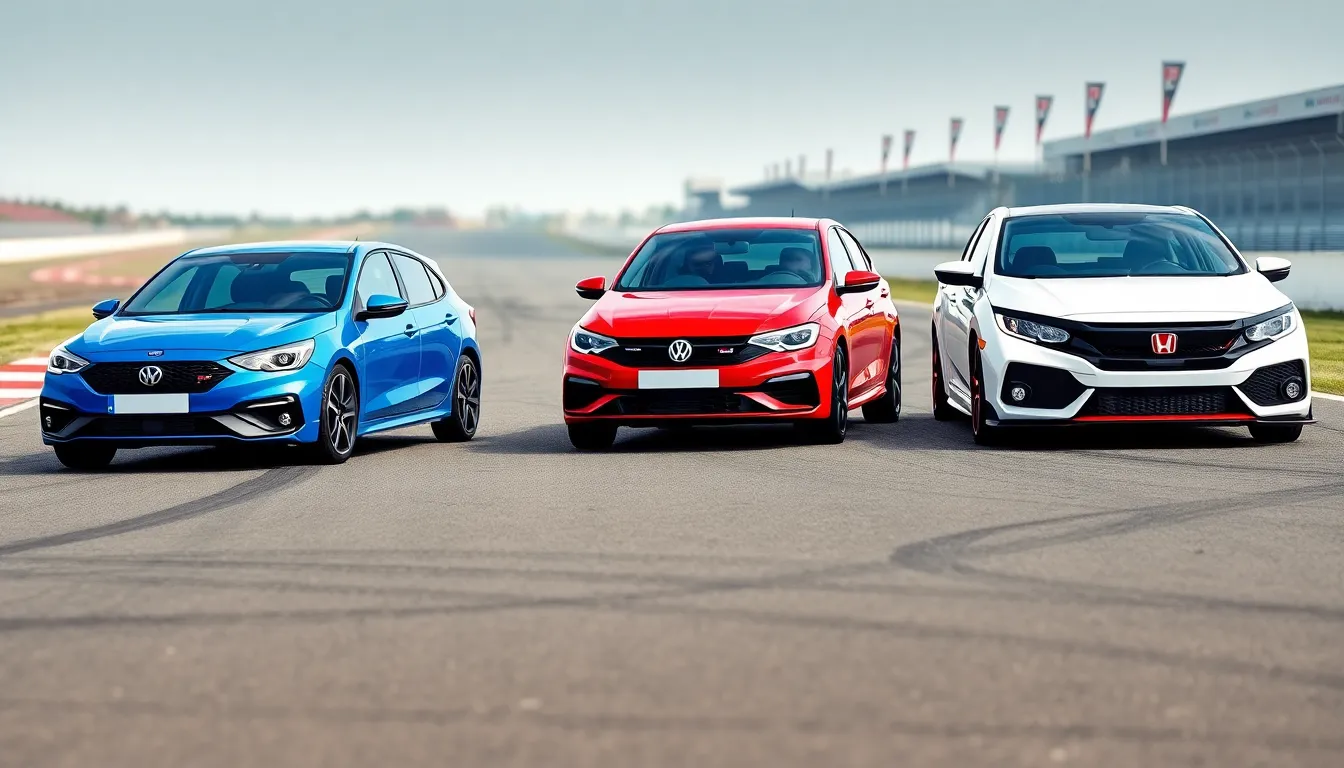
Performance hatchbacks deliver the thrill of sports car driving while maintaining the practical benefits we’ve highlighted throughout this article. These hot hatches combine aggressive styling with turbocharged engines to create the perfect balance between daily usability and weekend excitement.
Ford Focus ST
Ford’s Focus ST transforms the practical hatchback formula into a track ready performer that still handles grocery runs with ease. This turbocharged powerhouse generates 252 horsepower from its 2.0 liter EcoBoost engine, delivering acceleration that’ll pin you to your seat while maintaining respectable fuel economy ratings of 22 city/30 highway mpg.
Key Performance Features:
- 252 horsepower turbocharged engine
- Sport tuned suspension with enhanced handling
- Recaro sport seats for track day comfort
- Launch control system for optimal acceleration
Driving dynamics receive important attention in the Focus ST, with sport calibrated steering and performance brakes that provide confident stopping power during spirited driving sessions. We appreciate how Ford engineers balanced the suspension tuning to deliver sharp cornering capabilities without sacrificing ride comfort for daily commuting.
Volkswagen Golf GTI
Volkswagen’s Golf GTI established the hot hatch segment and continues setting the standard for performance hatchback excellence after more than four decades of evolution. This German engineered masterpiece produces 228 horsepower from its turbocharged 2.0 liter four cylinder engine, achieving an impressive balance between power delivery and fuel efficiency at 24 city/32 highway mpg.
Performance Specifications:
- 228 horsepower turbocharged engine
- Adaptive damping system for customizable ride quality
- Electronic differential lock for enhanced traction
- Performance oriented all season tires
Interior craftsmanship sets the GTI apart from mainstream hatchbacks, featuring distinctive plaid seat inserts and aluminum pedals that signal its sporting intentions. We find the driving position perfectly suited for both aggressive cornering and comfortable highway cruising, while the refined interior materials rival those found in luxury sedans.
Honda Civic Type R
Honda’s Civic Type R represents the pinnacle of front wheel drive performance, delivering track focused capabilities that earned it many accolades from automotive journalists worldwide. This Japanese engineered rocket produces an astounding 315 horsepower from its turbocharged 2.0 liter VTEC engine, making it one of the most powerful hatchbacks available in the American market.
Track Performance Data:
| Performance Metric | Civic Type R |
|---|---|
| Horsepower | 315 hp |
| Torque | 310 lb-ft |
| 0-60 mph | 5.1 seconds |
| Top Speed | 169 mph |
| Fuel Economy | 22/28 mpg |
Aerodynamic enhancements distinguish the Type R from standard Civic models, with functional air vents and a prominent rear wing that provide real downforce at highway speeds. We admire how Honda’s engineers developed adaptive dampers and a limited slip differential that work together to maximize traction during aggressive driving while maintaining civility during everyday use.
Racing inspired interior elements include lightweight bucket seats and aluminum shift knob that reinforce the Type R’s track day credentials. Even though its hardcore performance orientation, this hatchback retains the cargo space and rear seat accommodations that make it surprisingly practical for daily transportation needs.
Essential Features to Look for in Hatchback Cars
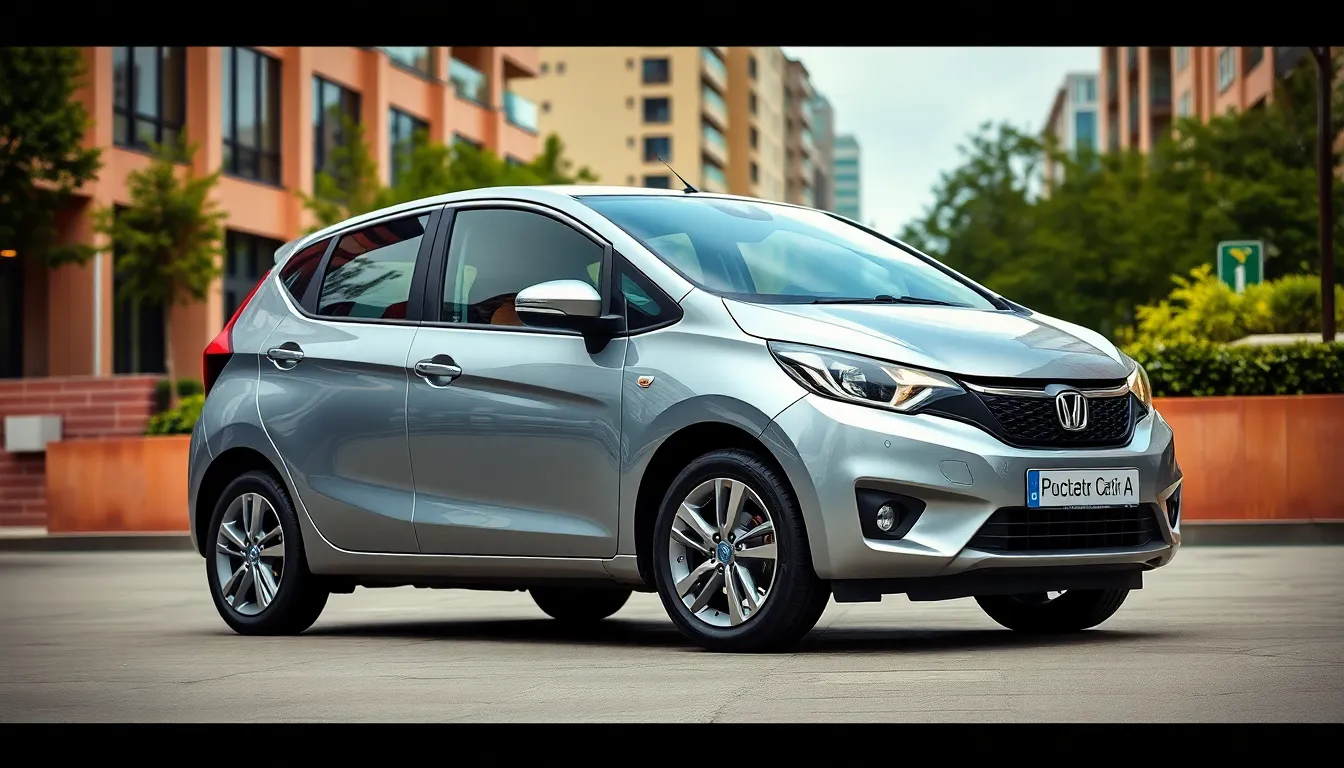
When shopping for your next hatchback, certain features can make the difference between a good purchase and a great one. We’ll examine the most important elements that affect your daily driving experience and long-term satisfaction.
Safety Technology and Ratings
Modern hatchback cars include advanced safety systems that protect you and your passengers on every journey. Most current models feature automatic emergency braking, which can prevent collisions by detecting obstacles and applying brakes when you can’t react in time. Lane departure warning systems alert you when drifting out of your lane, while blind spot monitoring helps you change lanes safely in heavy traffic.
Standard safety features now include multiple airbags, electronic stability control, and traction control across most hatchback models. The Honda Civic Hatchback earned a 5-star overall safety rating from NHTSA, while the Toyota Corolla Hatchback received Top Safety Pick recognition from IIHS. Premium models like the Audi A3 Sportback add adaptive cruise control and traffic sign recognition for enhanced protection.
| Safety Feature | Availability | Benefit |
|---|---|---|
| Automatic Emergency Braking | Standard on most 2024 models | Prevents rear-end collisions |
| Lane Keeping Assist | Available on mid-trim levels | Reduces highway fatigue |
| Blind Spot Monitoring | Standard on luxury models | Safer lane changes |
| Adaptive Cruise Control | Optional on most brands | Maintains safe following distance |
Infotainment and Connectivity Options
Today’s hatchback cars offer sophisticated infotainment systems that keep you connected while driving. Apple CarPlay and Android Auto integration comes standard on most models, allowing you to access your smartphone apps through the vehicle’s touchscreen display. Wireless connectivity eliminates the need for cables, making it easier to use navigation and music streaming services.
Touchscreen sizes range from 7 inches in base models to 12.3 inches in luxury variants like the Mercedes-Benz A-Class. Voice recognition technology lets you control music, navigation, and phone calls without taking your hands off the steering wheel. Premium audio systems from brands like Bose and Harman Kardon deliver concert-quality sound in compact hatchback cabins.
Built-in Wi-Fi hotspots allow passengers to stay connected during long trips, while USB ports throughout the cabin keep devices charged. The Volkswagen Golf features a digital cockpit that replaces traditional gauges with customizable displays showing navigation, audio, and vehicle information.
Interior Space and Comfort Features
Hatchback cars maximize interior space through clever design and thoughtful storage answers. Front seats offer multiple adjustment options, including lumbar support and heated surfaces for cold weather comfort. The Subaru Impreza Hatchback provides 37.6 inches of rear legroom, matching many larger sedans even though its compact footprint.
Cargo areas expand significantly when you fold the rear seats, creating flat loading floors perfect for weekend trips. The Toyota Corolla Hatchback offers 23.2 cubic feet of cargo space with seats up, expanding to 52.9 cubic feet with seats folded. Adjustable cargo floors and underfloor storage compartments help organize smaller items.
Climate control systems maintain comfortable temperatures throughout the cabin, with dual-zone automatic systems available in higher trim levels. Panoramic sunroofs create an open, airy feeling while premium materials like leather seating surfaces and soft-touch dashboard materials enhance the driving experience in luxury models like the BMW 1 Series Hatchback.
Maintenance Tips for Keeping Your Hatchback Running Smoothly
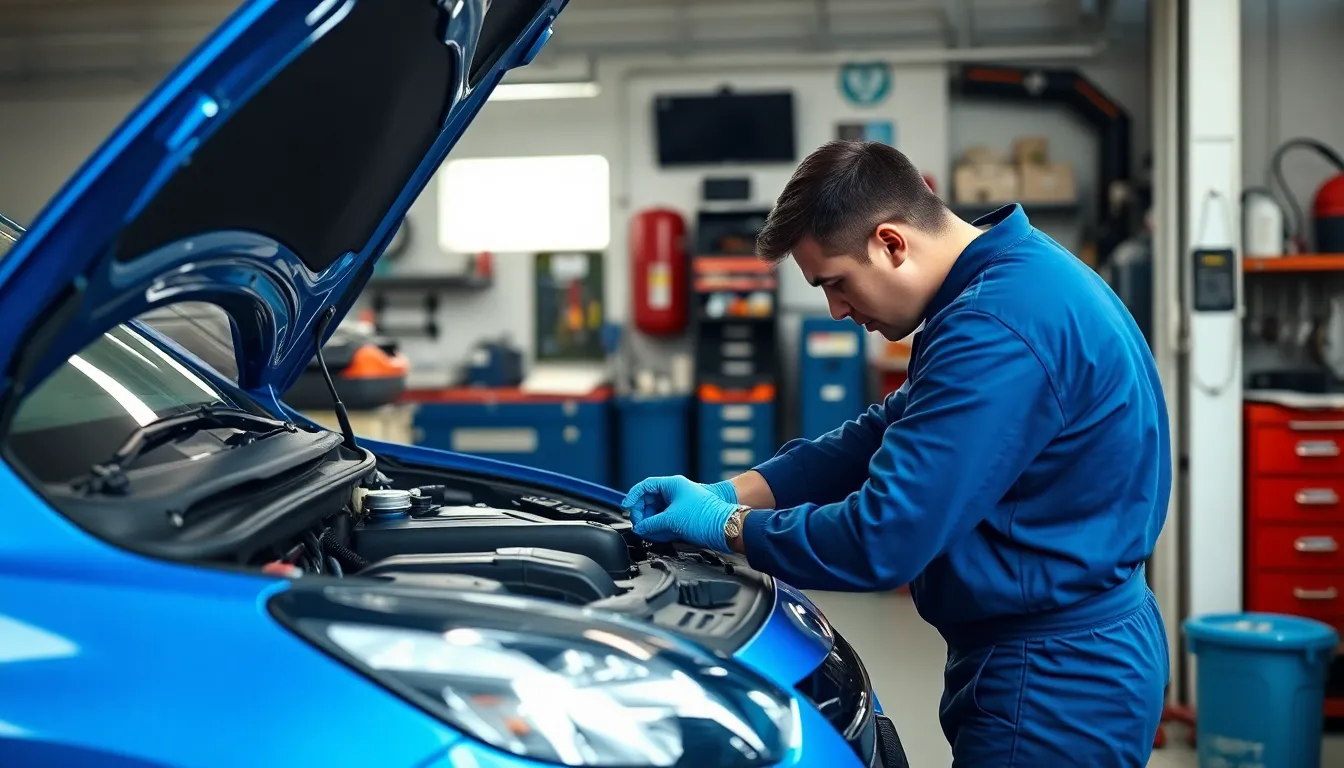
Proper maintenance keeps your hatchback performing at its best and extends its lifespan significantly. We’ve compiled essential maintenance strategies that’ll help you avoid costly repairs and maximize your vehicle’s efficiency.
Regular Service Schedule Requirements
Oil changes remain the most critical maintenance task for your hatchback’s engine health. Most manufacturers recommend changing engine oil every 7,500 to 10,000 miles for synthetic oil, while conventional oil requires changes every 3,000 to 5,000 miles. Honda Civic Hatchback owners should follow the maintenance minder system that alerts you when service is due.
Tire rotations every 5,000 to 7,500 miles ensure even wear patterns and extend tire life. Front-wheel-drive hatchbacks like the Toyota Corolla Hatchback typically show more wear on front tires due to steering and braking forces. Regular rotation patterns help maintain optimal traction and fuel efficiency.
Air filter replacements every 12,000 to 15,000 miles keep your engine breathing properly. Dirty filters reduce fuel economy and engine performance, particularly important for compact hatchbacks that rely on efficient airflow. Check filters more frequently if you drive in dusty conditions.
Brake inspections every 10,000 to 12,000 miles prevent safety issues and costly repairs. Hatchbacks’ lighter weight means brake components often last longer than heavier vehicles, but regular checks ensure optimal stopping power. Replace brake fluid every 2 to 3 years to maintain hydraulic system performance.
Common Issues and Prevention Strategies
Electrical system problems affect many modern hatchbacks due to their advanced technology features. Battery terminals corrode faster in humid climates, so clean them monthly with baking soda solution. Alternators typically last 80,000 to 120,000 miles, but watch for dimming lights or slow engine cranking.
Transmission maintenance varies significantly between manual and CVT-equipped hatchbacks. Manual transmissions in performance models like the Ford Focus ST require clutch inspections every 30,000 miles. CVT systems in models like the Honda Civic Hatchback need fluid changes every 60,000 miles to prevent belt wear.
Cooling system issues can develop from neglected maintenance schedules. Flush coolant every 60,000 to 100,000 miles depending on your manufacturer’s recommendations. Toyota Corolla Hatchback owners should inspect hoses and connections annually since these components age faster in extreme temperatures.
Suspension component wear occurs gradually but affects handling and tire wear patterns. Struts and shocks typically need replacement between 60,000 to 80,000 miles in most hatchbacks. Listen for unusual noises when driving over bumps and have suspension components inspected if you notice changes in ride quality.
Conclusion
We’ve explored why hatchbacks continue to capture the attention of modern drivers seeking smart transportation answers. These versatile vehicles deliver an unmatched combination of practicality and efficiency that’s hard to ignore.
Whether you’re handling busy city streets or planning weekend adventures hatchbacks adapt to your lifestyle without compromise. Their compact design doesn’t sacrifice the features and comfort you expect from today’s vehicles.
The key to maximizing your hatchback ownership lies in choosing the right model for your needs and maintaining it properly. With proper care these reliable vehicles will serve you well for years to come.
Hatchbacks represent more than just a vehicle choice—they’re a lifestyle decision that prioritizes efficiency versatility and smart spending without sacrificing quality or enjoyment.
Frequently Asked Questions
What are the main advantages of choosing a hatchback car?
Hatchbacks offer three key advantages: superior fuel efficiency (typically 28-35 mpg), enhanced cargo space with foldable rear seats, and excellent maneuverability in urban settings. They provide a perfect balance between compact sedans and larger SUVs, making them ideal for daily commutes and weekend activities while remaining affordable and practical.
Which hatchback models offer the best value under $25,000?
The Honda Civic Hatchback and Toyota Corolla Hatchback are top choices for reliable, affordable hatchbacks under $25,000. The Hyundai Elantra GT also provides excellent value with generous cargo space and modern features. These models combine fuel efficiency, practicality, and dependability at budget-friendly prices.
What safety features should I look for in a modern hatchback?
Modern hatchbacks should include advanced safety systems like automatic emergency braking, lane departure warnings, and collision avoidance technology. Models like the Honda Civic Hatchback earn high safety ratings from testing organizations. Look for comprehensive airbag systems, stability control, and driver assistance features for maximum protection.
How much cargo space do hatchbacks typically offer?
Hatchbacks provide impressive cargo capacity despite their compact size. Models like the Toyota Corolla Hatchback offer generous space that can be significantly expanded by folding down the rear seats. The integrated cargo area design allows for flexible loading of both passengers and cargo, making them versatile for various needs.
What maintenance is required to keep a hatchback running smoothly?
Regular maintenance includes oil changes, tire rotations, air filter replacements, and following the manufacturer’s service schedule. Pay attention to electrical systems, transmission care, and cooling system inspections. Proper maintenance prevents costly repairs, maximizes fuel efficiency, and ensures reliable performance throughout the vehicle’s lifespan.
Are hatchbacks good for city driving?
Yes, hatchbacks excel in city driving due to their compact dimensions, making parking and maneuvering through traffic easier. Their excellent fuel efficiency reduces costs during stop-and-go driving, while their elevated seating position compared to sedans provides better visibility in urban environments.
What infotainment features are available in modern hatchbacks?
Modern hatchbacks typically include touchscreen infotainment systems with Apple CarPlay and Android Auto integration, Bluetooth connectivity, USB ports, and premium audio systems. Many models also offer navigation systems, voice controls, and smartphone integration to enhance the driving experience and keep you connected.
How do performance hatchbacks differ from standard models?
Performance hatchbacks like the Ford Focus ST feature more powerful engines, sport-tuned suspensions, enhanced braking systems, and sportier interior and exterior styling. They maintain the practical cargo space of regular hatchbacks while delivering exciting driving dynamics and higher performance capabilities for enthusiasts.

